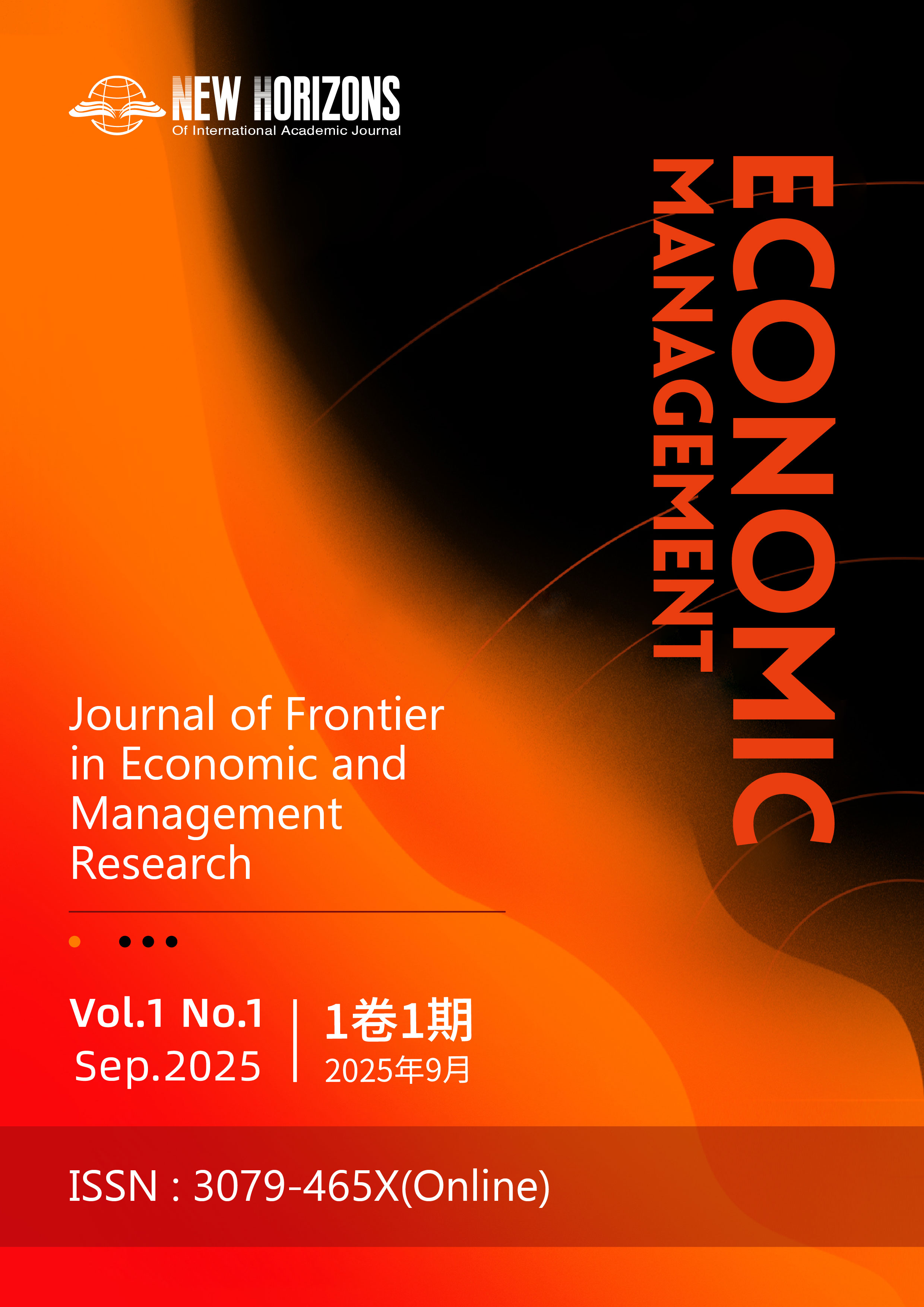Analysis of the Operating Capacity of Chinese New Energy Electric Vehicles Industry: Taking NIO as an Example
DOI:
https://doi.org/10.63944/m8wz.JFEMRKeywords:
Operating capacity; New energy vehicle; Accounts receivable turnover; Inventory turnoverAbstract
Spurred by the global climate crisis, nations worldwide are accelerating energy-structure adjustments and promoting the low-carbon transformation of the transport sector through policy incentives. Concurrently, the deep integration of digital technologies and artificial intelligence is reshaping the automotive landscape, driving the joint evolution of electric powertrains and intelligent-driving capabilities and laying the technological foundation for smart mobility solutions. Amid this shift, an emerging cohort of next-generation automakers has entered the market. This study focuses on NIO Inc. as a representative firm within the global new-energy-vehicle (NEV) segment. Based on the operational capacity theory, study selects three key operational ratios: accounts receivable turnover, inventory turnover, and total asset turnover. Its primary objectives are to evaluate NIO’s operational efficiency against industry benchmarks by checking NIO’s annual financial report data from 2019 to 2023, and to propose actionable recommendations for the operational challenges identified. The study found that the accounts receivable turnover and inventory turnover of NIO fluctuated significantly, while the total asset turnover was relatively low. To address that, three improvement suggestions were proposed: refining credit management, optimizing inventory management, and enhancing asset utilization. It is hoped that these suggestions would provide a reference for other NEV enterprises and contribute to better promoting development of the industry.
References
[1] Haeruddin, S.(2023) Accounts Receivable Turnover Analysis and Company Merchandise Inventory Turnover. Advances in Management & Financial Reporting,1(1): 34-43. DOI: https://doi.org/10.60079/amfr.v1i1.16
[2] Oktavia,S & Suparno,S.(2020) The Effect Of Receivables Turnover And Inventory Turnover On Profitability In Automotive And Component Companies Listed On The Indonesia Stock Exchange For The 2010-2019 Period. Balance Jurnal Ekonomi, 16(2): 183-193. DOI: https://doi.org/10.26618/jeb.v17i1.5467
[3] Wang,Z & Akbar,M &Akbar, A. (2020). Role of Working Capital Management in Financial Structure. Global Business Studies, 47(8), 678-692.
[4] Li,H. (2021). Research on the analysis system of enterprise operational capability. Economic Research Guide, (16), 23–25.
[5] Lin, P. (2024). A study on the operational capability of enterprises: Taking Binjiang Group as an example. Time-Honored Brand Marketing, (3), 133–135.
[6] Sheng, Q. (2023). A multidimensional analysis method for enterprise operational capability. Chinese Journal of Management, 48(1), 32–47.
[7] Bai, M. (2020). Research on the competitive landscape of the global new energy vehicle industry. Price: Theory & Practice, (1), 25–31.
[8] Liu, J & Li, H. (2022). Analysis of the financial capacity of new energy vehicle enterprises: Based on Tesla and BYD companies.World Economic Research, 11(4), 290-298. DOI: https://doi.org/10.12677/WER.2022.114033
[9] Liu, J & Li, H. (2022). Comparative analysis of the financial data of Chinese new energy vehicle enterprises: Xpeng and NIO. Modern Management, 12(11), 1482-1491. DOI: https://doi.org/10.12677/MM.2022.1211193
[10] Cai, Y., Chen, J., & Liu, W.(2025). Exploring the development trends of new energy vehicles in China. Statistics and Applications, 14(1),51–61. DOI: https://doi.org/10.12677/sa.2025.141006
[11] Qian, J.(2024).Research on financial risk early warning based on the efficacy coefficient method: A case study of NIO Inc.E-Commerce Review,13(2),3089–3099. DOI: https://doi.org/10.12677/ecl.2024.132381
[12] Jiang, B. & Xu, B. (2022). Research on the marketing strategy of new energy vehicle companies under environmental uncertainty: A comparison between BYD and Tesla.China Journal of Commerce, (2), 37–40.
[13] Liu, Ni.& Yin, Z. "The Impact of the New Economic Normal on China's New Energy Vehicle Industry. "Guangxi Quality Supervision Guide, no.2, 2021, pp. 210-11.
[14] Yu,Y.(2024).Research on the operating performance evaluation of listed companies in China’s new energy vehicle manufacturing industry. E-Commerce Review, 13(2), 3245–3254. DOI: https://doi.org/10.12677/ecl.2024.132399
[15] He, Q. (2023). Research on evaluation of enterprise operating capacity based on financial indicators: A case study of Company Z. Operations Research and Fuzzy Mathematics, 13(3), 2091–2100. DOI: https://doi.org/10.12677/ORF.2023.133209
[16] Kang, T.(2024). Competitive status and strategic analysis of NIO Inc. in the stock-based new energy vehicle market.E-Commerce Review,13(2),1262–1270. DOI: https://doi.org/10.12677/ecl.2024.132156
[17] Yu, F. (2024). Research on the marketing strategy of NIO new energy vehicles based on the“4R”theory. E-Commerce Review, 13(4),1671–1680. DOI: https://doi.org/10.12677/ecl.2024.1341320
[18] Cheng,J & Chen,Z(2021).Impact of high-speed rail on the operational capacity of conventional rail in China.Transport Policy,(110), 354-367 DOI: https://doi.org/10.1016/j.tranpol.2021.06.016
[19] Feng, P., & Liu, J. (2023).Analysis of the impact of new energy vehicles replacing fuel vehicles on the profitability of the automotive industry.Modern Management, 13(10),1252–1262. DOI: https://doi.org/10.12677/MM.2023.1310158
[20] Liu, W. (2024). New energy vehicle incentive policies and prospects based on SWOT analysis. Management Science and Engineering, 13(1), 246–256. DOI: https://doi.org/10.12677/MSE.2024.131024
[21] Li, X. (2023). Research on the development strategy of SAIC new energy vehicles based on SWOT analysis. Operations Research and Fuzzy Mathematics,13(5), 4525–4530.
Downloads
Published
Issue
Section
License
Copyright (c) 2025 Journal of Frontier in Economic and Management Research

This work is licensed under a Creative Commons Attribution 4.0 International License.









